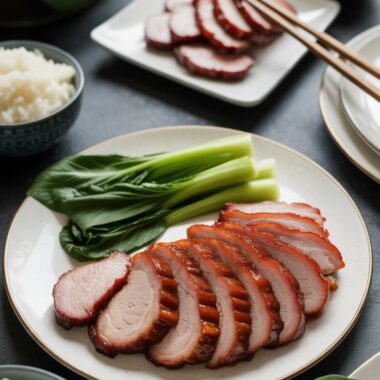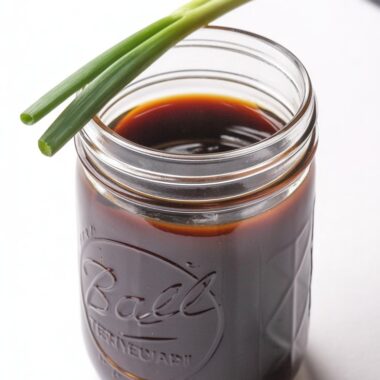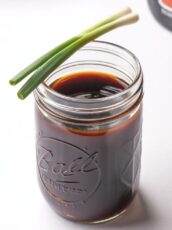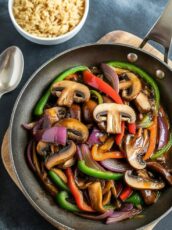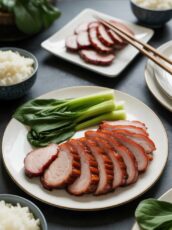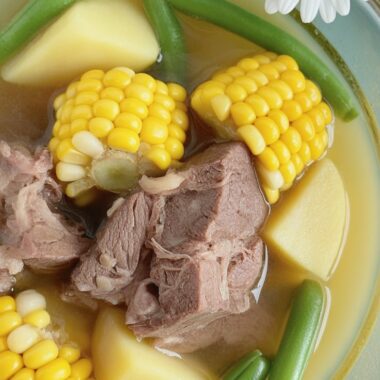Eggplant tossed in a glossy sweet-and-salty sauce, kissed with the aroma of Thai basil—it’s one of those dishes that makes you forget you’re eating vegetables. This Thai Basil Eggplant is naturally vegan, gluten-free, and comes together in about 30 minutes. I love serving it with rice or noodles for an easy weeknight dinner.
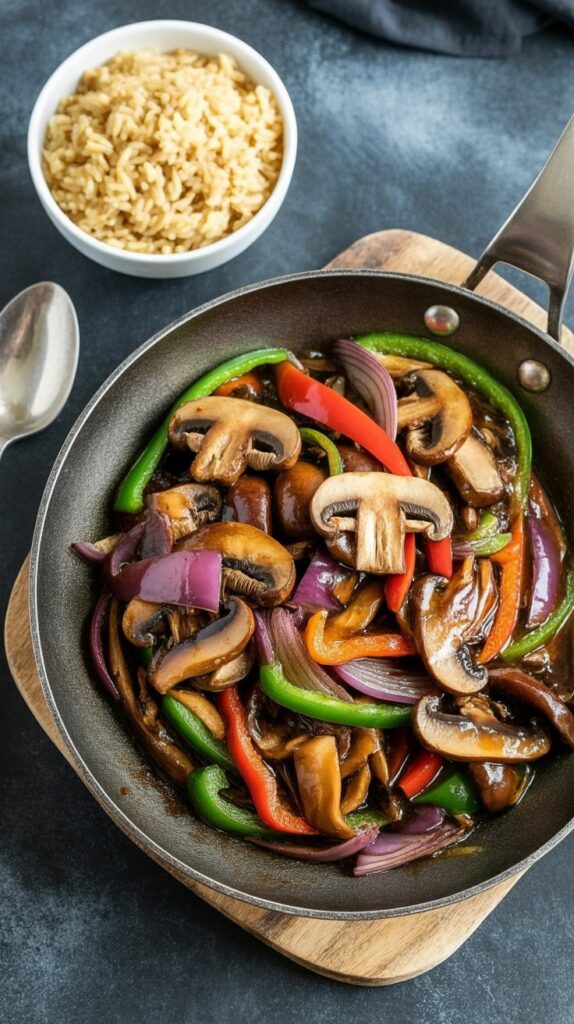
Why I Keep Coming Back to This Dish
I’ve been an eggplant fan for as long as I can remember. Growing up, baingan bharta was a staple in our home, smoky and rustic, scooped up with hot rotis. Later, I discovered eggplant parmesan in college, then borani banjan through an Afghan neighbor. Each recipe showed me a new personality of this one humble vegetable.
But Thai-style eggplant is what I crave when I want bold flavors without a lot of fuss. The first time I tried a similar dish at a small family-run Thai restaurant, I was hooked. Sweet, salty, spicy, and fragrant all in one bite. This recipe is my version of that experience, adjusted for what I usually keep in my pantry.
What Makes This Recipe Work
- Fast and Flavorful – Ready in about 30 minutes, making it a solid weeknight choice.
- Plant-Based & Gluten-Free – A great option if you’re cooking for mixed diets.
- Flexible Serving – Works just as well as a main with rice as it does as a side with a larger spread.
- A Way to Love Eggplant – Even people who usually push eggplant aside tend to go for seconds here.
Ingredient Notes and My Kitchen Lessons
- Japanese Eggplant – Long, slender, and tender. They cook quickly and don’t turn mushy like the big globe eggplants can. I tried swapping them once in a pinch, and while edible, it just wasn’t the same. If you can find Japanese eggplants, use them.
- Thai Basil – Sweet basil won’t cut it here. Thai basil has that slightly peppery, anise-like flavor that gives this dish its character. I keep a small plant in a pot during summer just for recipes like this.
- The Sauce – My “cheat” version of hoisin sauce. Maple syrup for sweetness, tamari for depth, peanut butter for body, sriracha for heat, sesame oil for fragrance, and a tiny pinch of cinnamon and coriander. When I first mixed it up, I worried it would taste like peanut butter noodles, but it balances beautifully once it hits the pan.
- Veggies – I use peppers and onions for crunch and color. I always give them a quick stir-fry before adding the sauce so they keep a little bite.
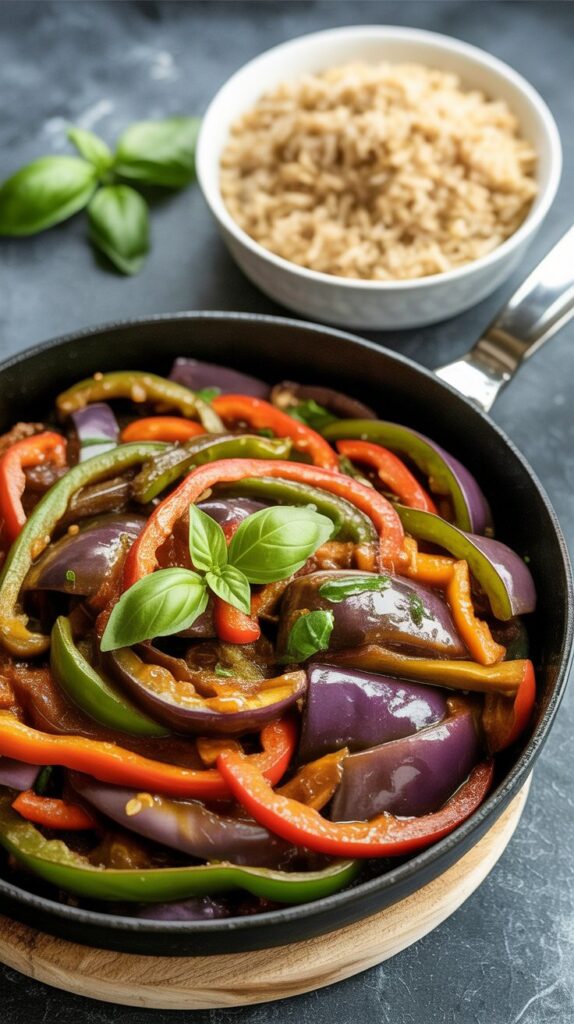
My Tips for Cooking the Eggplant
Over the years of making this dish, I’ve learned that eggplant can be a little moody. Cook it wrong and it turns soggy or greasy. Cook it right and it’s silky, tender, and still holds its shape.
- Slice them evenly—not too thick, not too thin. I usually go for about half an inch.
- If pan-frying, don’t crowd the pan. I often cook mine in two batches so every piece gets browned.
- A sprinkle of water while cooking helps the slices soften without guzzling oil. My mom used this trick in her curries, and it works wonders here too.
- Baking works too, especially if you want less oil, but I personally prefer the flavor of pan-fried.
Serving Ideas from My Table
At home, we usually scoop this over brown rice for dinner. It also pairs beautifully with jasmine rice or a tangle of rice noodles. If I’m making a bigger Thai-inspired spread, I’ll serve it alongside green curry or a simple cucumber salad. Sometimes I even stuff the leftovers into lettuce wraps for a quick lunch—it’s surprisingly good that way.
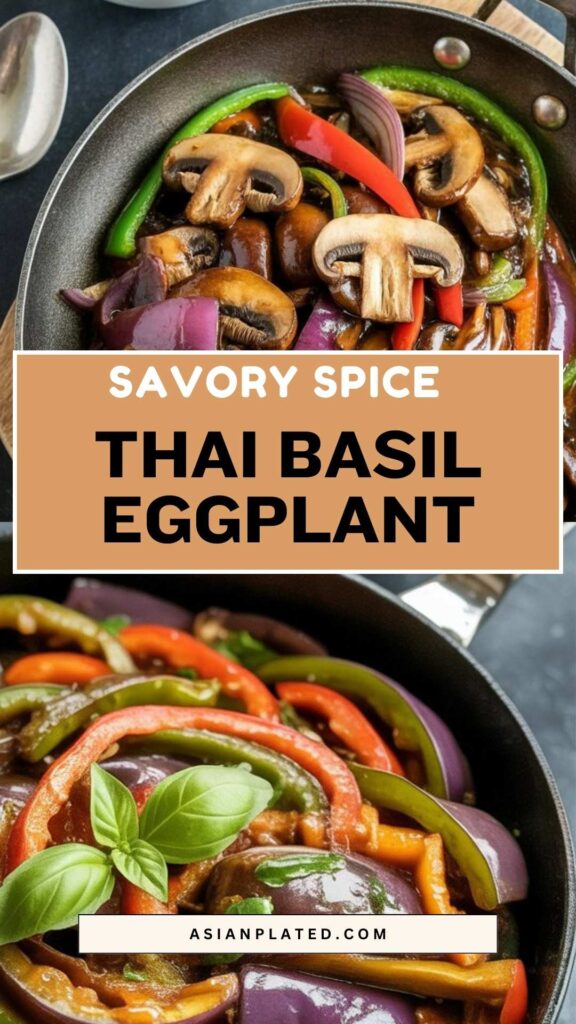
Make Ahead and Storage
This dish tastes best fresh when the basil is still fragrant and the eggplant has its silky bite. That said, leftovers keep well in the fridge for up to 2 days. I store them in a glass container and reheat in a skillet with just a splash of water. The sauce tends to thicken up as it sits, so loosening it with a little water brings it back to life.
If you’re meal prepping, you can make the sauce in advance and store it in a jar for 3–4 days. Then all you need to do is cook the veggies and toss everything together.
Thai Basil Eggplant
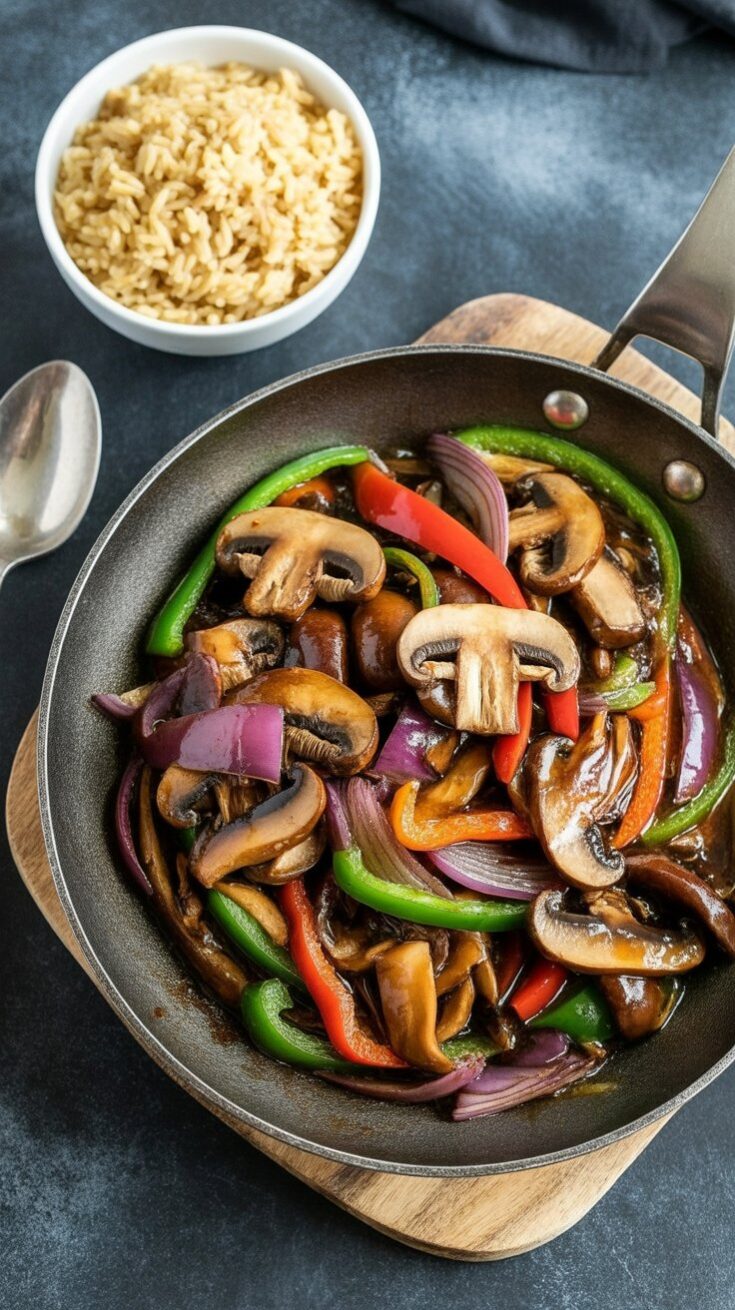
This vibrant Thai-inspired stir fry turns tender Japanese eggplant into a sweet, savory, and slightly spicy dish bursting with fresh basil aroma. It’s vegan, gluten-free, and perfect with steamed rice or noodles for a quick weeknight meal.
Ingredients
For the Sauce
- 2½ tbsp maple syrup
- 3 tbsp tamari (or soy sauce)
- 2 tbsp rice vinegar
- 1 tbsp peanut butter
- 1–2 tsp sriracha (to taste)
- 1 tsp toasted sesame oil
- Pinch of ground coriander
- Pinch of ground cinnamon
- ⅓ cup water
Cornstarch Slurry
- 2 tsp cornstarch
- 2 tbsp water
For the Stir Fry
- 4 tbsp oil, divided (I used avocado oil)
- ½ large red bell pepper, sliced
- ½ large green bell pepper, sliced
- ½ medium white onion, sliced
- 2 medium Japanese eggplants, sliced (not too thin or too thick)
- 5–6 large garlic cloves, chopped
- 1½-inch piece fresh ginger, chopped
- 1 Thai green chili, sliced
- ½ cup Thai basil, chopped
- Salt, to taste
Instructions
- Prep the vegetables: Slice the eggplants, peppers, and onion. Set aside.
- Make the sauce: In a blender, combine maple syrup, tamari, rice vinegar, peanut butter, sriracha, sesame oil, coriander, cinnamon, and water. Blend until smooth. Set aside.
- Mix the slurry: Stir together cornstarch and water in a small bowl. Keep handy.
- Stir fry the peppers and onion: Heat 1 tbsp oil in a large pan over medium-high heat. Add the peppers and onion and cook for 1–2 minutes so they stay crisp. Transfer to a plate lined with paper towels.
- Cook the eggplant: Add 2 tbsp oil to the same pan. Arrange eggplant slices in a single layer and cook over medium heat, stirring often, until soft but still holding their shape—about 7–8 minutes. Sprinkle small amounts of water while cooking if needed, but avoid making them watery. Work in batches if your pan is small. Transfer cooked eggplant to a paper towel–lined plate.
- Build the flavor base: Add the remaining 1 tbsp oil to the pan. Sauté garlic, ginger, and Thai chili for 1–2 minutes until fragrant.
- Add sauce & thicken: Pour in the prepared sauce, then whisk in the cornstarch slurry (stir it first to re-mix). Increase heat to high and cook until the sauce thickens, about 2–3 minutes.
- Combine everything: Add the eggplant, peppers, and onion back into the pan along with Thai basil. Toss to coat evenly. Taste and season with salt if needed. Lower heat and simmer for 2 minutes.
- Serve: Garnish with extra basil and serve hot with rice or noodles.
Notes
- This sauce replaces hoisin sauce and has a subtle nutty depth from peanut butter—but once the flavors meld, it doesn’t taste like peanut butter at all.
- Japanese eggplants work best for this recipe because of their tender flesh and mild flavor.
Nutrition Information:
Yield: 4 Serving Size: 1Amount Per Serving: Calories: 405Total Fat: 18gSaturated Fat: 2gTrans Fat: 0gUnsaturated Fat: 15gCholesterol: 0mgSodium: 1348mgCarbohydrates: 59gFiber: 10gSugar: 23gProtein: 9g
Asianplated.com, occasionally offers nutritional information for recipes contained on this site. This information is provided as a courtesy and is an estimate only. This information comes from online calculators. Although allchickenrecipes.com attempts to provide accurate nutritional information, these figures are only estimates.
Common Questions I Get
Can I use regular eggplant instead of Japanese eggplant?
Technically yes, but the texture will be different. If you must, go for smaller Italian eggplants instead of the big globe ones.
What if I can’t find Thai basil?
It really is the star of this dish. If you can’t find it, you can still make the recipe with sweet basil, but it won’t taste quite the same.
Is this very spicy?
That depends on your sriracha and chili tolerance. I usually keep it mild and add fresh green chili for myself at the table.
Can I add protein to this?
Absolutely. Tofu works great—pan-fry it until golden before tossing in the sauce.
Try other Thai recipes:

